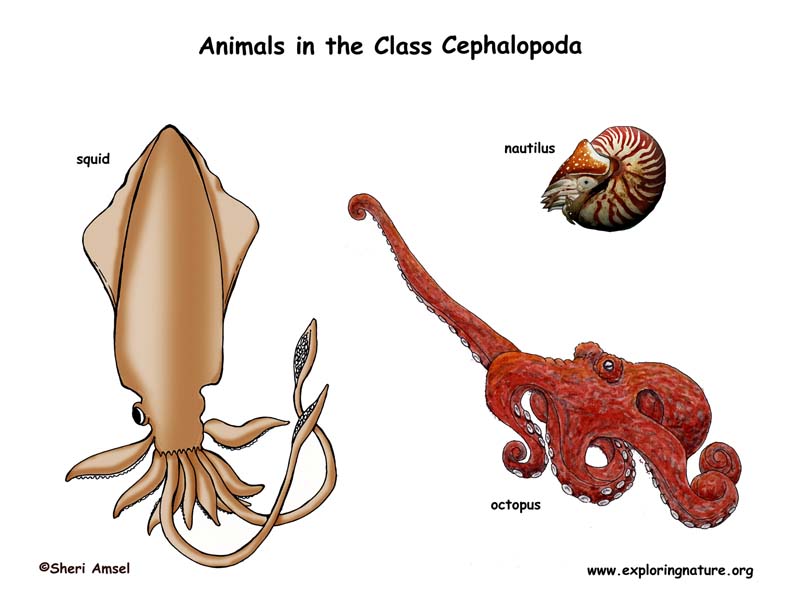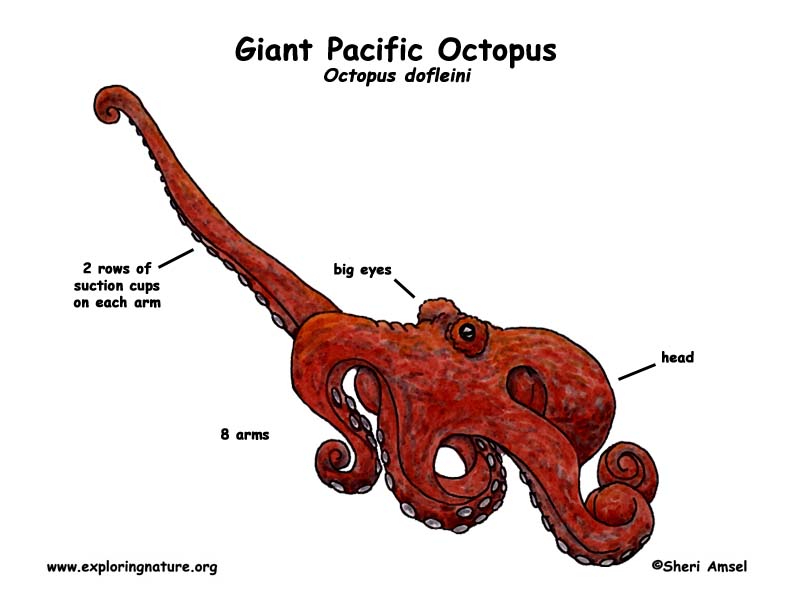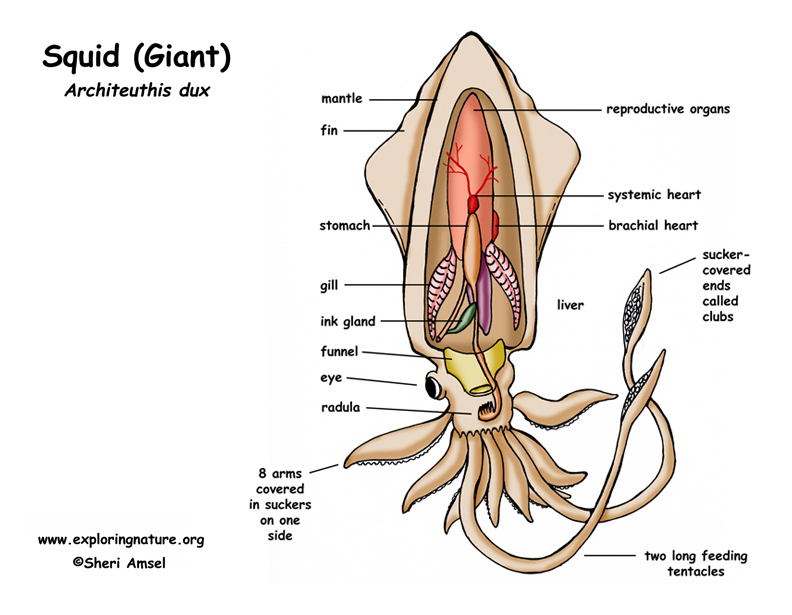

Kingdom Phylum Class
Animals > No Backbone (Invertebrate) > Squid, Octopus and Nautilus (Cephalopod)
Where They Live (Range and Habitat): Squid, Octopus and Nautilus live in the ocean.
What Their Body is Like (Anatomy): The Squid, Octopus and Nautilus have a number of arms or tentacles that circle their “head.” Each arm has two rows of suction cups.
The octopus has eight arms. Squid have both arms and tentacles.
The Squid, Octopus and Nautilus have a brain and eyes with good, color vision.
They are thought to be smart and able can learn from experience.
The Squid and octopus have a funnel structure, called a hyponome. They can blow water through their funnel to move through the water quickly.
Many in this group have ink. They release it into the water if they are startled.
They can also change color to blend in (camouflage) and escape predators.
The nautilus has a shell to protect it.
Squid have a skeleton.
The Octopus has neither.
What They Eat: The Squid, Octopus and Nautilus are predators. They use their arms (or tentacles) to trap prey, and a sharp beak to bite prey. They then stuff prey into their central mouth.
To learn more about the octopus: LINK
To color an octopus: LINK
To label the parts of an octopus: LINK
To learn more about squid go to: LINK
To color a squid: LINK
To label the parts of a squid: LINK
When you research information you must cite the reference. Citing for websites is different from citing from books, magazines and periodicals. The style of citing shown here is from the MLA Style Citations (Modern Language Association).
When citing a WEBSITE the general format is as follows.
Author Last Name, First Name(s). "Title: Subtitle of Part of Web Page, if appropriate." Title: Subtitle: Section of Page if appropriate. Sponsoring/Publishing Agency, If Given. Additional significant descriptive information. Date of Electronic Publication or other Date, such as Last Updated. Day Month Year of access < URL >.
Amsel, Sheri. "Squid, Octopus and Nautilus (Cephalopod Group)" Exploring Nature Educational Resource ©2005-2024. December 13, 2024
< http://www.exploringnature.org/db/view/1095 >



